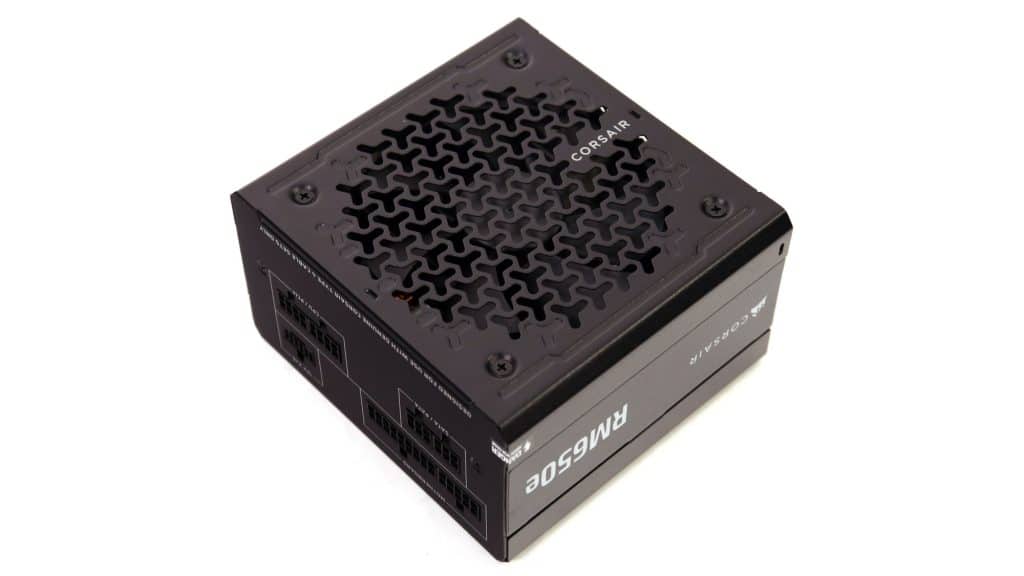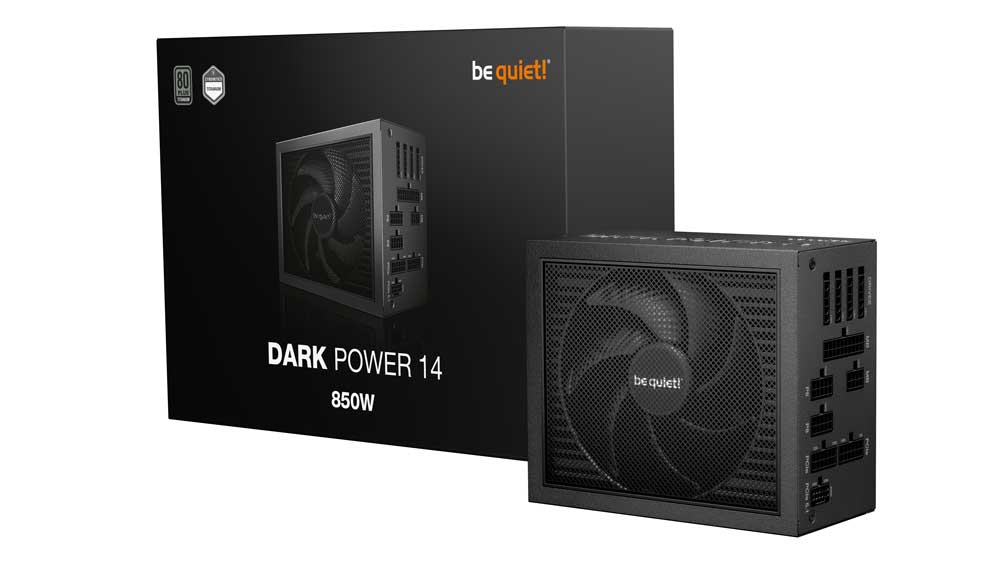Epilogue
There is no RM650x (ATX v3.1), providing a tremendous edge to the RM650e (ATX v3.1). There are not many 650W PSUs compatible with Intel’s newest ATX spec (and the PCIe CEM 5.1), so the competition is not fierce in this category. With its 12V-2×6 socket set at 300W max output, the RM650e can support the upcoming NVIDIA RTX 5070 and 5070 Ti models, which have 250W and 300W TDP, respectively. That said, if you use other power-hungry components, you will be left out of power, and you should also take into account that having your PSU operating at high loads all the time is not beneficial for its longevity. The efficiency will be lower, too. The best load range for peak efficiency is between 40-60% for most PSUs. It is like the engine of an airplane. You only push it at full throttle during take-off, when you perform a go-around or want to avoid a stall.
Remember that overclocking can substantially increase the power consumption of individual components, CPU, and GPU, so buying the strongest and best PSU you can afford is ideal if you want to push your system beyond its official limits. For example, an Intel Core Ultra 9 Processor 285 has close to 450W sustained power consumption with an Extreme Performance profile applied!
The RM650e (ATX v3.1) is among the few good choices in this capacity range, and its price is fair, given its specs. With 30 dollars more, though, you can get one of the best mid-capacity PSUs available in today’s market, the RM750x (ATX v3.1), so consider this, too.
Before investing in a new power supply, read my Best ATX v3.x PSUs article to check all alternative PSU offerings. You help me a lot by using my affiliate links, which don’t increase the product’s price. I get a commission from Amazon every time you do it, which can make a difference for me, especially now that I am on my own, working exclusively for my media and not for someone else.
- Delivered full power at 47°C
- High overall performance
- Silent operation
- Cybenetics Platinum Certified
- Good transient response at 12V
- Long hold-up time
- Efficient 5VSB rail
- Good-performing APFC converter
- Within 1% load regulation on the primary rails
- Good ripple suppression on the minor rails
- Low vampire power at 115V
- Good soldering quality
- Good quality rifle-bearing fan
- Alternative Low Power Mode (ALPM) compatible
- High inrush currents
- Lower than 70% efficiency with a 2% load
- Mediocre transient response at 3.3V
- Protection features need adjustments





RM650e is one of my candidate.
I’ll be using a Ryzen 5 5600G APU.
Will this be enough. I’m scared of the 3.3V mediocre response. Thank you very much, Sir Aris, you are once in a lifetime individual. We need more people like you who are highly focused on PSU. Many PC builders never give emphasis on the importance of PSU.
It will be ok, yes. The 3.3V rail is only lightly used in contemporary systems.
Has no -12 volt rail. Will this be a problem for some older mobos?
Hi! Just came over this excellent review when picking a PSU for my new eGPU setup.
The enclosure is Razer Core X V2 (TB5) that requires a ATX PSU. The graphics card is a 5080FE. While 5080FE’s TGP is 360W, and the recommended PSU for system is 850W+, for an eGPU it should be significantly lighter so a 650W output is likely to be sufficient.
However, RM650e has a 300W rated 12V-2×6 cable, which is lower than the 360W TGP. Corsair’s website did not reveal anything related to the 300W bottleneck for RM650e, and this is only mentioned by Cybenetics’ rating and your review. Do you think that this would constitute a bottleneck and safety concern? I know that due to the Thunderbolt bandwidth, I may never really hit a max load (let alone I’m running TB3/USB4 in the short term), but it may still be a concern if TB5 can later reach it. Furthermore, do you think the bottleneck would be on the cable rating or the PSU? If former, then maybe replacing with a 600W rated 12V-2×6 cable can resolve the potential issue…
yes that can be a problem, better get a PSU that is set at 600W, on its 12V-2×6 header. Remember the cable is the same, it is the setting of the PSU’s 12V-2×6 port that does the trick.
Hello Aris, such great work your providing the community! Now that my eyes are open I feel like they should have never hit the market from the beggining, an example is the FSP Vitas, I was about to buy one but was hesitant because you made very explicit about the Yang Loo fan being very weak, so I did some research and Voilá there seems to be an increasing number of people who bought a Vita some months ago now posting videos about fan noise and asking for advice. I mean the Vitas are amazing as far as voltage regulations goes and whatnot, but should a product that is bound to fail shortly after being sold really be put out to the market? It’s not so easy finding a Psu we can trust
So about this Rme650, the Inrush Currents are really high, will that be an issue or is it good? I’m thinking it might be good due to the new gpus needing very short power spikes but then again I’m not totally familiar with the concept and also your graph states that Lower is Better, pls if you can take the time to briefly elaborate I’d be very welcome! Seems like Corsair adopted Cybenetics approved test so cheers on that
Hi! High inrush currents are not good, but it is not easy, at all, to completely drain the bulk cap(s) as we do. High inrush current means that with a completely drained bulk cap, the PSU asks for way to much power, which can even trip the electrical relay connected to the AC socket. As for YL fans, they are hit and miss unfortunately. Really bad idea from FSP to use them and I told them to switch ASAP to something better.
I get it now! So my lack of in depth electrical knowledge assumes it shouldn’t be a problem unless the bulk caps go bad or the psu is disconnected from the ac plug for a very long time? For high inrysh currents psu would it be better prior to the 1st ever use to plug her to ac power and turn the On switch for the bulk capacitors to fill up??
Also, I’m thinking of getting this Rme650 to go with a 330 TDP gpu (7800 xt overclocked) and 65W ryzen 7600, for a total of 450W, just 2 quick questions please:
-Do you think if in the future If I go for something like a 9800x3d while keeping a ~300W TDP gpu it would be problematic?
-Also, this psu only comes with 1x “12v-6×2 to 2x8pin” cable, but it’s only rated for 300W, isn’t this a problem for a 330W gpu? I think it’s my only way of connecting the gpu with this cable… because the psu only has 2x8pin Cpu/Pcie connections so I need 1 for Cpu and I don’t know if I should connect the gpu (which has 2x8pin) to only 1x8pin on the psu.
1) 9800X3D has low power consumption so even with a 300W GPU this PSU will be ok
2) If the GPU needs 330W then it will probably won’t work with the 300W set 12V-2×6
Thank you Aris! I actually ended up going with your suggestion “you can get one of the best mid-capacity PSUs available in today’s market, the RM750x (ATX v3.1), so consider this, too” and I already have a Ryzen 7700 with me and waiting on a Palit 5070 Ti. So my plans sidetracked completely and ended up getting a different Psu, Cpu, Gpu. Ahahahah
Is there a Paypal where I could buy you a beer?
Much *more* success to you and your team Aris, thanks for the help!
this little rm is the best cybernetic power AND noise sold in rm series sold by corsair
Speaking about Corsair …
I own rm 1000x 2024
Rtx 4090 super (right now)
Ryzen 9800x3d
For future Rtx 5090 is good way to go ? This psu will handle it ? I searched whole psu’s models on your side and I’m looking for sleeved cabled / individually so u pick this one.
yes it will be ok